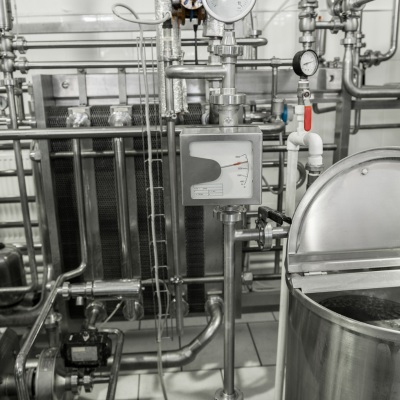Dispersancy testing is a crucial technique employed to check the dispersant properties of lubricants. It determines the ability of a lubricant to suspend and disperse contaminants, preventing their accumulation and the formation of harmful deposits.
In this blog, we will explore the importance of dispersancy testing in machinery lubrication, its impact on equipment reliability and longevity, and the methodologies used to assess dispersancy.
This blog is essential for professionals and enthusiasts involved in maintaining and operating industrial machinery, automotive engines, and mechanical systems. It caters to individuals responsible for ensuring their equipment's optimal performance and longevity.

The efficiency and longevity of machinery rely on functioning lubricants. Industrial machinery, automotive engines, and various mechanical systems enjoy using lubricants that minimize friction and protect against wear and tear. But lubricants can deteriorate over time due to contamination from solid particles and deposits, causing detrimental effects on machinery performance.
Dispersancy Testing
Dispersancy testing involves evaluating the dispersant properties of lubricants by examining their ability to suspend and disperse solid particles and contaminants. The presence of contaminants can lead to the formation of sludge, varnish, and deposits, compromising the efficiency and functionality of machinery. Dispersancy testing enables manufacturers and maintenance professionals to select lubricants with excellent dispersant qualities and maintain a clean and efficient system.
Impact on Machinery Performance

Deposits and Sludge Prevention
Deposits and sludge can hinder machinery performance by obstructing critical components, impeding heat transfer, and restricting fluid flow. Dispersancy testing helps identify lubricants with superior dispersant properties that can prevent the accumulation of contaminants, keeping machinery clean and reducing the risk of operational issues.

Improved Equipment Reliability
Clean and efficient lubrication systems lead to enhanced equipment reliability. Dispersant additives in lubricants reduce the formation of harmful deposits, protecting machinery components such as bearings, gears, and valves from excessive wear. This, in turn, minimizes unplanned downtime, maintenance costs, and equipment failure, resulting in improved productivity and profitability.

Extended Machinery Longevity
Effective dispersancy in lubricants contributes to the extended lifespan of machinery. By preventing the formation of deposits and minimizing wear, lubricants with excellent dispersant qualities ensure optimal performance and reduce the likelihood of premature component failure. Regular dispersancy testing enables maintenance professionals to track the performance of lubricants over time and make informed decisions on lubricant selection and replacement intervals.
Methodologies
Dispersancy testing involves using various analytical techniques to check the dispersant qualities of lubricants. These methodologies include:
- Turbidimetric Analysis: This method measures the increase in turbidity caused by adding solid particles to a lubricant. It provides a quantitative measure of the dispersancy of the lubricant by analyzing the rate and extent of particle suspension.
- Filtration Tests: These tests involve passing a lubricant through a membrane filter and evaluating the extent to which it retains solid particles. The filtrate is then inspected to determine the level of particle dispersion, which indicates the dispersancy capabilities of the lubricant.
- Sludge Rating Tests: Sludge rating tests involve exposing lubricants to elevated temperatures for an extended period to simulate operating conditions. The generated sludge is then inspected and rated to assess the dispersancy qualities of the lubricant.

Blotter Test
When evaluating filtration systems' effectiveness, our partner, Focuslab LTD. in Thailand, has established itself as an industry leader, offering reliable filtration tests. Yet, CRE Philippines presents an innovative solution—the Blotter Test for a quick and convenient preliminary screening on-site. This test, developed based on Focuslab's extensive research and expertise, provides valuable insights into the levels and characteristics of dispersancy.
Let's delve into the details to shed light on the power of dispersancy testing. The following table offers a comprehensive reference guide outlining the key parameters and their corresponding values:
| Former Name | Index Number |
| Excellent | 100 - 90 |
| Good | 80 - 70 |
| Moderate | 60 - 40 |
| Poor | 30 - 20 |
| Fail | 10 - 0 |
By employing the index test developed in collaboration with Focuslab, CRE Philippines ensures accurate and consistent results. This test measures the dispersancy level and provides valuable insights into the specific characteristics exhibited.
Conclusion
Dispersancy testing plays a critical role in ensuring machinery's reliability and longevity by assessing lubricants' ability to disperse and suspend contaminants. By preventing the formation of deposits and reducing wear, lubricants with superior dispersant properties enhance equipment performance and minimize unplanned downtime and maintenance costs. Regular dispersancy testing lets maintenance professionals decide on lubricant selection, replacement intervals, and maintenance strategies, ensuring optimal machinery operation.
As machinery continues to evolve and face demanding operating conditions, the importance of effective dispersancy in lubrication cannot be overstated. Incorporating dispersancy testing into maintenance programs improves machinery performance and contributes to operational efficiency, cost savings, and a reduction in environmental impact. By prioritizing dispersancy testing, industries can ensure that their machinery runs smoothly, minimizing the risk of costly breakdowns and maximizing productivity.
Ready to optimize your equipment performance and ensure the longevity of your machinery? Discover the power of the Oil Analysis Program by CRE Philippines. With our comprehensive reliability programs, we offer cutting-edge oil analysis services that include dispersancy testing and much more.
Participating in the Oil Analysis Program allows you to access advanced testing methodologies and expert insights to make data-driven decisions about your lubrication practices. Uncover potential issues before they lead to costly breakdowns, improve equipment reliability, and extend the lifespan of your machinery.
Don't wait for problems to arise. Take proactive steps towards maximizing your operational efficiency and reducing maintenance costs. Contact us to learn more about the Oil Analysis Program and how it can revolutionize your maintenance approach.
Source:
Trujillo, G. (2023, April). Dispersancy Testing. Machinery Lubrication. https://www.machinerylubrication.com/Read/32320/dispersancy-testing


